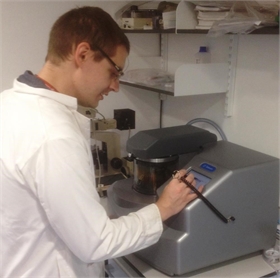William (Bill) Luckhurst heads up the operation and maintenance of the instrumentation facilities of the Physics Department of King’s College, London. With nearly forty years’ experience, Bill has seen the development of many techniques including scanning electron microscopy (SEM), atomic force microscopy (AFM), thin film thermal evaporation and vacuum design & practice. These days, Bill and his colleague, Dr Ben Blackburn, are responsible for managing the use of the instrumentation, providing training and induction to new users. Bill also has many PhD students using the equipment as well as other University of London and private, industrial users. With high running costs, the laboratories have to be kept running 24/7 to earn their keep and to support the growing research activities such as the Physics Department Photonics research group.
Having modern, easy-to-use and reliable equipment are some of Bill’s criteria when he goes out to source new instrumentation. With a wide range of samples to analyse with imaging requirements from the micron to the nanometre level, a reproducible and solid coating system is essential. As Professor Al-Jamal Khuloud from the Pharmacy Department has said “coating our samples, submicron nanoparticles of a variety of shapes and dimensions, with thin layers of gold prior to SEM imaging not only enhances image contract, it conducts charge away from the surface.” Such requirements were important factors when Bill came to purchase a new coater around 18 months ago.
Bill takes up the story: “Procurement rules insist on three quotations and then a justification case for the purchase. When I requested a demonstration, Quorum were by far the most responsive of manufacturers. Other vendors were either not really interested or their products turned out to be prohibitively expensive. The QT150T ES was exactly what I needed at a price that I could afford in a package that looked good, was easy to use and maintain. The sample stages supplied with the instrument allow a diverse range of samples to be coated; the rotating planetary sample holder is particularly useful as it allows the even coating of irregular shaped samples. The user instruction and programming screen is a wheeze to use; tuition times for new users are around ten minutes and everyone is very happy. Additionally some researchers use the coater for other applications where they want a thin coherent film up to say 50 nm produced by a cold process where conventional thermal evaporation could damage a delicate surface.”
* Dr Ben Blackburn of the Physics Department, King’s College London, uses the Quorum Q150T ES coater to prepare samples for analysis by SEM.



